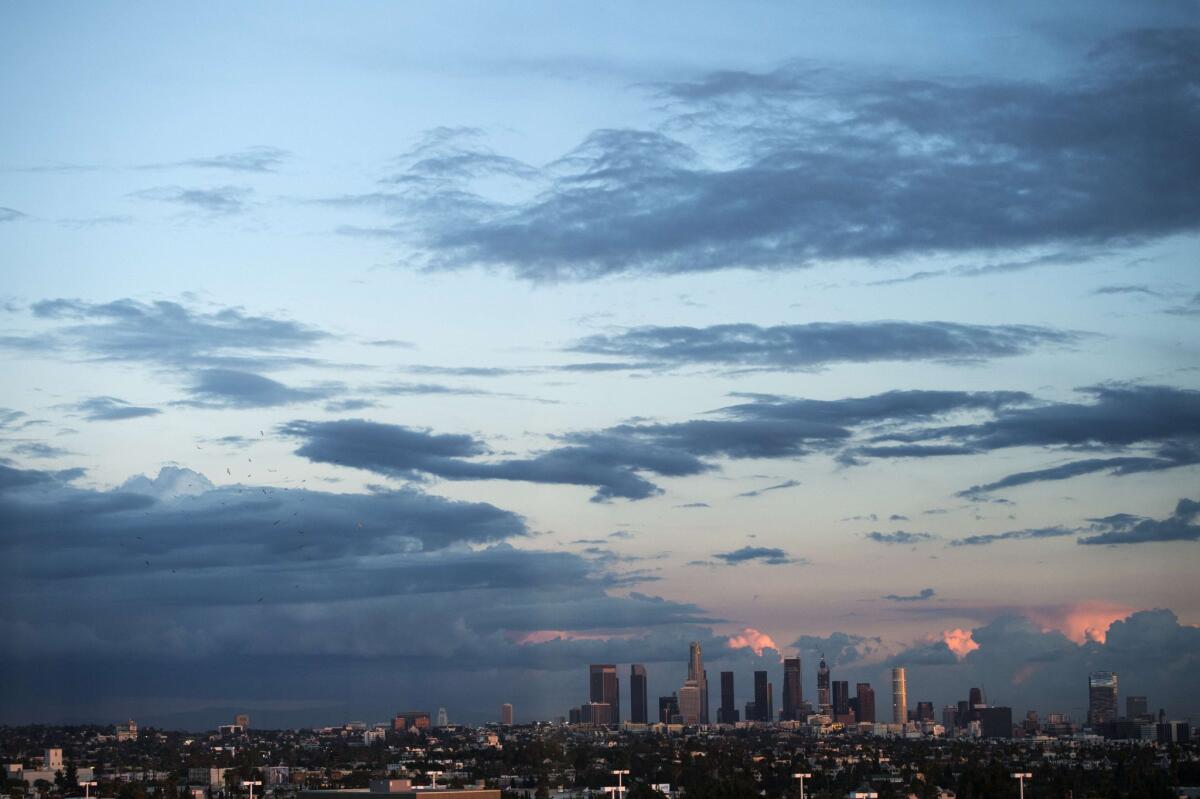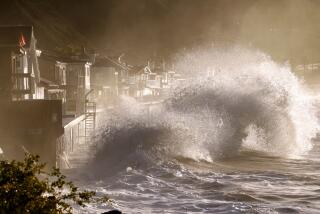As huge El Niño brews, California fights to keep drought mentality

Los Angeles is hoping the coming rains expected from El Niño will help alleviate some of the damage of the drought.
- Share via
As experts continue to predict a wet winter because of El Niño, California officials continue to take a cautious approach when it comes to easing water conservation measures amid the state’s four-year drought.
Officials have long feared heavy rains would reduce conservation by residents, even though a major El Niño would not end the drought by a long shot.
Californians have taken up the call to reduce water use during the drought, including pulling out lawns and using more water-efficient appliances in their homes.
Officials want that “drought mentality” to continue as El Niño approaches.
Q: What’s the latest forecast?
The National Weather Service’s Climate Prediction Center said El Niño is already strong and mature, and is forecast to continue gaining strength. This El Niño is expected to be among the three strongest on record since 1950.
“It’s official. El Niño’s here. It’s a done deal,” said Bill Patzert, climatologist for NASA’s Jet Propulsion Laboratory in La Cañada Flintridge. “So at this point, we’re just waiting for the impacts in California.”
Q: When will it hit?
Generally, El Niño doesn’t peak in California until January, February and March, Patzert said. That’s when Californians should expect “mudslides, heavy rainfall, one storm after another like a conveyor belt.”
“January and February are just around the corner. If you think you should make preparations, get off the couch and do it now. These storms are imminent,” he said. “El Niño is here. And it is huge.”
Q: Will this affect the mandatory water-use reductions imposed by Gov. Jerry Brown?
Highly unlikely. As The Times’ Chris Megerian reported Friday, a new executive order from Brown says that if the drought continues through January, mandatory water cuts will remain in effect until October.
Brown’s original order, issued in April, was effective only until February.
The winter storms are not expected to end the drought, meaning Brown’s water cuts probably would stay in place under his new executive order.
A wet winter helped end a drought in 1993, but that’s unlikely this year, said Maury Roos, the state’s chief hydrologist.
Q: But could that change?
Yes. The State Water Resources Control Board could modify conservation rules, which call for a 25% statewide reduction in urban water use. California consumers have consistently met the target since the order took effect in June.
Felicia Marcus, the board’s chair, said a potential change to the rules could reduce the conservation requirement if there’s strong precipitation in February and March.
Brown’s executive order “gives us the flexibility to consider all of those things,” she said. “We just have to see where we are. No one can predict the weather.”
Q: Will El Niño rains reach into Northern California, where much of the state’s water works are located?
It’s looking more possible. An October forecast showed the increased rain reaching far into Northern California to the mountain ranges and system of reservoirs that provide the state with huge amounts of its water. Earlier forecasts showed El Niño providing rain mainly to Southern California.
ALSO
Get ready for traffic headaches as Vice President Joe Biden visits L.A.
2 men found shot to death inside Valencia home, sheriff’s deputies say
Wild weather brings tornado to Central Valley and wind, snow elsewhere







